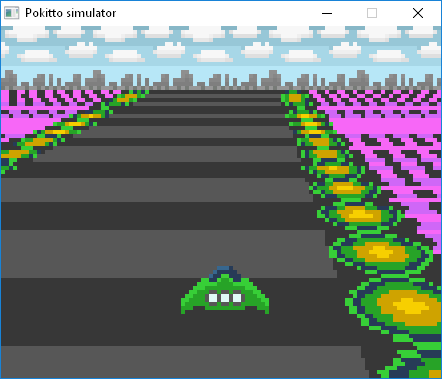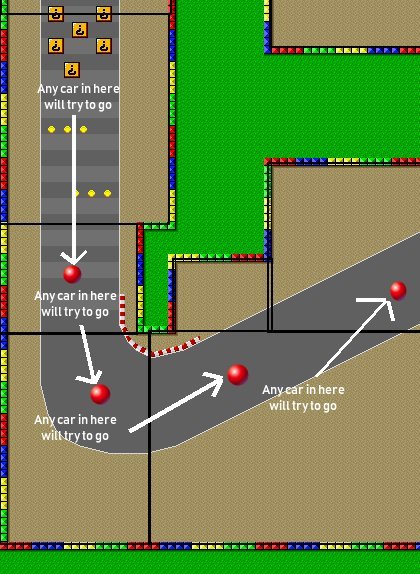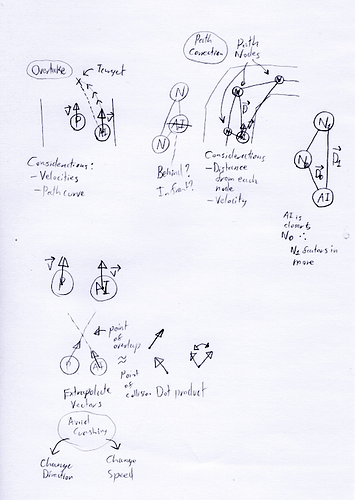Is the resolution for this display mode definitely 220x176?
I think I messed the calculations up slightly before, but now going by my calculations the height needed to match the FZero proportions would be ~34 for 220x176 or ~18 for 110x88.
using System;
namespace Lerp
{
class Program
{
static double mapRange(double input, double inputMin, double inputMax, double outputMin, double outputMax)
{
return outputMin + (input - inputMin) * ((outputMax - outputMin) / (inputMax - inputMin));
}
const int FZeroImageHeight = 448;
const int FZeroRoadHeight = 354;
const int FZeroSkylineHeight = 94;
const int PokittoHiresHeight = 176;
const int PokittoLoresHeight = 88;
static void Main(string[] args)
{
if (FZeroRoadHeight + FZeroSkylineHeight != FZeroImageHeight)
throw new Exception("Assertion failed");
Console.WriteLine("Hires:");
Console.Write("Skyline: ");
Console.WriteLine(mapRange(FZeroSkylineHeight, 0, FZeroImageHeight, 0, PokittoHiresHeight));
Console.Write("Road: ");
Console.WriteLine(mapRange(FZeroRoadHeight, 0, FZeroImageHeight, 0, PokittoHiresHeight));
Console.WriteLine();
Console.WriteLine("Lores:");
Console.Write("Skyline: ");
Console.WriteLine(mapRange(FZeroSkylineHeight, 0, FZeroImageHeight, 0, PokittoLoresHeight));
Console.Write("Road: ");
Console.WriteLine(mapRange(FZeroRoadHeight, 0, FZeroImageHeight, 0, PokittoLoresHeight));
Console.WriteLine();
Console.ReadKey();
}
}
}
Either way I might be able to redo the skyline graphic for a smaller size.
Edit:
If you’re sticking to 22x16 for the skyline, here’s one I redid from scratch:

And here’s it tiled 10 times:










Before I try to make another road border, it would be good to see some of the aternatives that I posted the other week:





Rather than the sort of abstract mess that FZero has, I could attempt to do something that looks like a circuit board, or perhaps just some grass or desert?
Trying to make something city-like would be difficult because the buildings would probably end up looking flat.
If you want both small and big details, the tiles might have to be bigger than 16x16.
If making them larger is a problem, another alternative would be to do a small pattern with tiles and then have some large objects that are drawn on top of the tiles and generated randomly.
E.g. a dessert could have some cacti, a grassy plain could have trees
I’m currently reshading the ships.
Is this style of shading better, and do you think the lighter or darker looks better?



 It runs at about 60 FPS. Use the 4-way-controller for steering and acceleration, and press the B button for an uncontrolled spin
It runs at about 60 FPS. Use the 4-way-controller for steering and acceleration, and press the B button for an uncontrolled spin 




